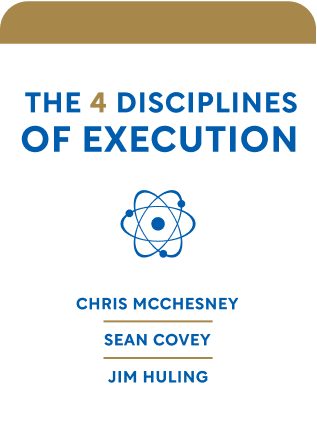

This article is an excerpt from the Shortform book guide to "The 4 Disciplines of Execution" by Chris McChesney, Sean Covey, and Jim Huling. Shortform has the world's best summaries and analyses of books you should be reading.
Like this article? Sign up for a free trial here .
What are wildly important goals? How are the critical to the 4DX system?
Wildly important goals are the top things you want to accomplish. They shouldn’t be part of the daily whirlwind, but something bigger and more important to you.
Read on for more about wildly important goals.
The Need for Wildly Important Goals
The key of this discipline is to focus on—and only on—the wildly important goals. Genetically, human beings work best when they do one thing at a time. Multitasking overloads our brains, and when our brains are overtaxed, they slow down. As you practice multitasking, you actually get worse at thinking and problem-solving. As a result, it’s physically impossible to be most effective when concentrating on too much at once.
You can see the harmful effects of multitasking in the workplace too. When you have too many goals, you get hit with the law of diminishing returns. If you have four to ten goals, you might achieve one or two. If you have more than ten, you won’t achieve any of them. Too many or unfocused goals also make the whirlwind worse. What might be five goals at the top of an organization cascades down to many smaller goals at the bottom of the hierarchy, creating too much to focus on. Also, conventional organizational goals often lack measurability, focus, and a deadline.
Therefore, when you want to create change, choose one, at max three, very important goals to work toward. Call them Wildly Important Goals (WIGs) to make it easy for you and staff to remember that they’re top priority. These goals should not come from the whirlwind, and this discipline doesn’t apply to the whirlwind. (The whirlwind is made up of the essential day-to-day activities that keep your organization running. If you ignored parts of it, your organization wouldn’t survive.)
Additionally, this discipline helps you more clearly communicate your strategy to your organization. Choosing a WIG forces you to translate strategy from ideas to a specific outcome. When there are only a few specific outcomes, it’s easy for your staff to differentiate what’s goal and what’s whirlwind.
Four Rules for Organizational Application
4DX can be used in any context, but the authors focus on team and organizational settings. Therefore, in much of the following, the authors refer to two types of WIGs: overall WIGs and team WIGs.
The overall WIG is the WIG for the entire organization, chosen by the senior leaders.
Team WIGs are the goals of specific teams. They move the organization closer to the overall WIG, but the focus or language of the team WIGs may be different from those of the overall WIG.
Once an organization has an overall WIG, there are four rules for applying Discipline 1 across the organization:
- Rule #1: No team focuses on more than two WIGs.
- Rule #2: The WIGs at lower levels of the organization must directly help achieve those at higher levels.
- Rule #3: Senior leaders can veto but not choose the lower level WIGs.
- Rule #4: All WIGs must contain a measurable result and deadline, in the form of “from point A to point B by deadline.”
Implementing Discipline 1: Focus
Wildly important goals must challenge your team, but it must also be achievable. Don’t game your team by choosing something impossible while privately thinking if they manage 75% of it, you’ll be happy. Long-term, this will affect your ability to engage your team and produce results.
There are four steps to selecting WIGs:
Step 1: Brainstorm a List of Possible Wildly Important Goals
To brainstorm, come up with ideas on your own and consult team members and peer leaders, if applicable.
Step 2: Assess Impact
Once you have a list of possible WIGs, determine the ones that have the most impact on the overall WIG.
Some guidelines:
- If the overall WIG is financial, then the team WIG should have something to do with money: revenue, profitability, cost savings, etc.
- If the overall WIG is quality, then the team WIG could have something to do with productivity or customer satisfaction.
- If the overall WIG is strategic, then the team WIG could address the mission, new opportunities, or how to reduce threats.
Step 3: Test the Top Team WIG Candidates
Test each potential WIG. If the answers to all of the following questions are yes, the WIG passes the test.
- Does it support the overall WIG? Review step 2.
- Is there a way to measure it? There must be a way to measure it from the very first day. If you have to build a measurement system, choose a different WIG, because there’s no point starting 4DX without a score.
- Can your team achieve the WIG without significant help from another team? Your team should have at least 80% ownership. If it doesn’t, your team won’t feel engaged and accountable. However, it’s fine for two teams to have the same WIG, though, as long as they’re aware they share the outcome (both succeed or both fail)
- Are the results driven by the team rather than the leader? The team needs to have an impact on the results or they won’t be engaged.
Step 4: Write the WIG in the “From Point A to Point B by Deadline” Format
Start with a simple verb.
- Good: Cut costs…
- Bad: In order to create a reduction in costs, we anticipate…
The lag measure must be expressed as “from point A to point B by deadline.”
- Good: from 85% to 95% customer satisfaction by February 28
- Bad: Increase customer satisfaction
Be concrete, precise, and simple.
- Good: Reduce time lost incidents from 8 per year to 1 per year by March 31.
- Bad: Our aim is to increase safety, according to our mission, which is…
Don’t put in any language about how you’re going to do it.
- Good: Increase profit from $8 million to $10 million over six months.
- Bad: Increase profit from $8 million to $10 million over six months by increasing revenue in the following five areas…
Exercise: Choose Wildly Important Goals
- Invent an overall WIG for your organization. (If you’re not clear on the overall goals of your organization (not uncommon), or you’re not having a brainwave, you can use this one, which should apply to most organizations: increase profit from point A to point B over the next year.)
- Brainstorm a list of possible WIGs for your team. Think of your own ideas first, and then imagine what your coworkers and peer leaders might suggest.
- Assess the impact of your brainstormed team WIGs on the overall WIG. Your team WIG should directly contribute to the overall WIG. Consider if the overall WIG is financial, strategic, or quality-related.
- Test your best three team WIGs, keeping in mind their impact on the overall WIG. Are the team WIGs measurable? How would you measure them? Would your team depend on another team to achieve them? Is it the leader or the team members driving the results? How do you know?
- Write your final WIG in the format [Simple verb] from [point A] to [point B] by [deadline].

———End of Preview———
Like what you just read? Read the rest of the world's best book summary and analysis of Chris McChesney, Sean Covey, and Jim Huling's "The 4 Disciplines of Execution" at Shortform .
Here's what you'll find in our full The 4 Disciplines of Execution summary :
- The 4 disciplines that can make any strategy a successful reality
- Why a great plan falls apart when you don't think adequately about execution
- The 6 steps you need to scale the 4DX model across an entire organization






